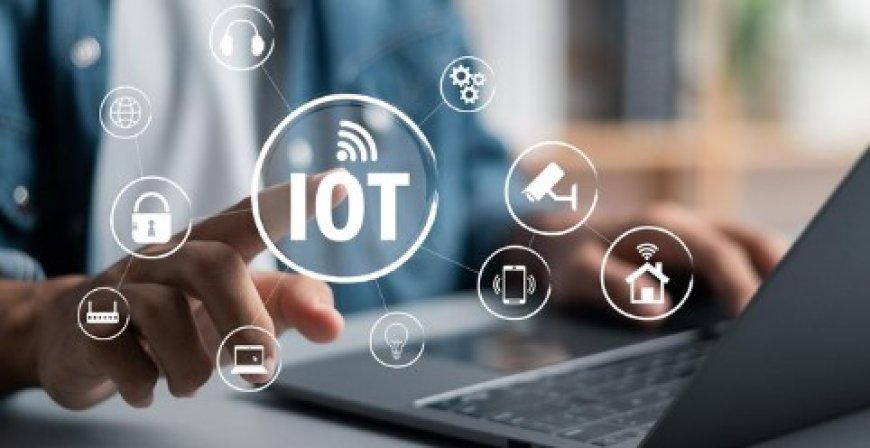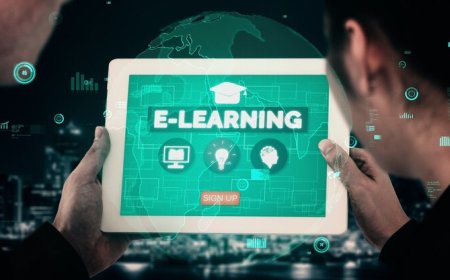Importance of IOT
Explore the transformative impact of IoT, enhancing efficiency and enabling smart solutions in various industries

The Internet of Things (IoT) is like a big network that connects devices and sensors, allowing them to share data over the internet. It's important because it helps businesses and industries work more efficiently by letting them monitor and control things in real time. For example, in manufacturing, IoT helps prevent machine breakdowns, while in healthcare, it enables continuous patient monitoring, improving outcomes and reducing costs. Overall, IoT makes our world smarter and more connected, making tasks easier and saving time and money.
IoT makes life better by giving us smart gadgets like thermostats that know when we're home and cars that tell us about traffic. It's not just about cool gadgets, though. IoT helps businesses run smoother and lets doctors keep an eye on patients from afar. It's all about making things easier and connecting everything so we can do more with less hassle.
What is IoT?
IoT stands for the Internet of Things, which means connecting everyday objects to the Internet so they can share information. It's like giving things like your fridge or your car a way to talk to each other and you.
Components of the IoT Ecosystem
The components work together to enable the functionality of IoT systems, allowing for efficient data collection, transmission, and analysis, ultimately leading to informed decision-making and automation.
-
Sensors and Devices: These are the parts of IoT that gather information from the world around us. Sensors measure things like temperature, light, or movement, and they're built into devices like smart thermostats, fitness trackers, or machines in factories.
-
Connectivity Technologies: This is how IoT devices talk to each other or the internet. Think of it like the Wi-Fi or Bluetooth in your phone but for other things too. It could be through Wi-Fi, Bluetooth, or even special networks like Zigbee or LoRaWAN.
-
Data Processing and Analytics: Once the sensors collect information and send it through the connections, it's time to make sense of it. Data processing organizes and cleans up the information, while analytics looks for patterns or useful insights.
In the real world, IoT is everywhere, from smart thermostats that learn your habits to help you save energy to wearable fitness trackers that monitor your activity. In agriculture, IoT helps farmers keep track of their crops and animals, while in cities, it helps manage traffic and streetlights more efficiently. IoT is all about making our lives easier and our world smarter by connecting everything around us.
Impact of IoT Across Industries
-
In healthcare, IoT allows for remote patient monitoring, personalized medicine, and efficient asset management, ensuring better care and resource allocation.
-
In manufacturing, IoT enables predictive maintenance to prevent costly downtime, optimizes supply chains for smoother operations, and enhances quality control processes.
-
In smart cities, IoT aids in traffic management by adjusting signals based on real-time data, promotes energy efficiency through smart infrastructure, and facilitates effective waste management practices.
-
In agriculture, IoT supports precision farming by monitoring soil conditions and crop health, aids in livestock management, and empowers farmers with data-driven insights for improved productivity and sustainability. Overall, IoT transforms industries by enhancing efficiency, decision-making, and resource utilization.
Advantages of Implementing IoT Solutions
IoT solutions offer numerous advantages, from improved efficiency and decision-making to cost reduction and enhanced user experience.
-
Improved Efficiency and Productivity: IoT makes things run smoother and faster by doing tasks automatically, like adjusting settings without manual intervention.
-
Enhanced Decision Making: With IoT, businesses get useful insights from data, helping them make better decisions and stay ahead of competitors.
-
Cost Reduction and Resource Optimization: IoT saves money by preventing problems before they occur, like fixing machines before they break down, and by minimizing waste in operations.
-
Enhanced User Experience and Convenience: IoT personalizes experiences to fit individual needs, making life more convenient, such as adjusting home temperature preferences automatically.
Challenges and Considerations in IoT Implementation
Setting up IoT comes with some tricky parts that need careful thinking. First off, there's keeping everything safe and private because there are lots of devices talking to each other and sharing information. Then, making sure all those devices can actually understand each other and work together smoothly is another challenge.
As your IoT network grows, it can get pretty complicated to manage. And you've got to follow all the rules and regulations about keeping people's data safe and secure. Think of it like making sure you're driving safely and following the road rules. Even though IoT can make life easier, it's important to handle these challenges smartly to make sure everything runs smoothly.
Future Trends and Innovations in IoT
-
Edge Computing and Fog Computing: These technologies involve processing data closer to where it's generated, such as on devices or local servers, rather than sending it all to a central location. This reduces latency and bandwidth usage, making IoT applications faster and more responsive.
-
Integration with AI and Machine Learning: By combining IoT with artificial intelligence and machine learning algorithms, devices can analyze large amounts of data in real time, enabling them to learn from patterns and make autonomous decisions. This leads to smarter, more adaptive IoT systems that can anticipate user needs and optimize performance.
-
5G Technology and Enhanced Connectivity: The rollout of 5G networks provides faster and more reliable connectivity, with lower latency and higher capacity compared to previous generations. This enables IoT devices to transmit and receive data more efficiently, supporting applications that require high-speed, real-time communication, such as autonomous vehicles and augmented reality.
-
Expansion of IoT into New Domains: As IoT technology matures, its applications are expanding into new domains beyond traditional areas like smart homes and industrial automation. For example, in agriculture, IoT sensors can monitor soil conditions and crop health to optimize irrigation and fertilization, while in healthcare, wearable devices and remote monitoring systems enable continuous health monitoring and personalized care. These developments are driving innovation and improving efficiency across various industries.
Opportunities and Career Prospects in IoT
Roles and Skills Required in the IoT Industry:
-
IoT Developer: Designing, developing, and maintaining IoT systems and applications.
-
Data Analyst: Analyzing data generated by IoT devices to derive insights and inform decision-making.
-
Cybersecurity Specialist: Ensuring the security of IoT networks and devices against cyber threats.
-
Systems Engineer: Integrating hardware and software components to build IoT solutions.
-
IoT Architect: Designing the overall architecture and framework of IoT systems for scalability and reliability.
-
Communication Protocols Expert: Understanding and implementing various communication protocols used in IoT networks, such as MQTT or CoAP.
-
Domain Expertise: Knowing specific industries like healthcare, manufacturing, or agriculture to tailor IoT solutions to industry-specific needs.
-
Programming Skills: Proficiency in programming languages like Python, Java, or C++ for developing IoT applications.
-
Data Analysis Skills: Ability to analyze and interpret large datasets generated by IoT devices.
-
Networking Knowledge: Understanding of networking concepts and protocols, including TCP/IP, DNS, and DHCP, for configuring and troubleshooting IoT networks.
Educational Pathways and Training Programs
Entering the IoT industry offers numerous educational pathways and training opportunities. One route involves pursuing a bachelor's or master's degree in computer science, electrical engineering, or a related field. Additionally, individuals can opt for online courses and certifications focusing on IoT technologies, programming languages, and cybersecurity. Bootcamps and workshops focusing on IoT development, data analytics, and cybersecurity provide hands-on training, while internships offer practical experience in IoT-related fields.
As IoT technology evolves, new job roles are emerging, such as IoT Solutions Architect, IoT Product Manager, IoT Consultant, and IoT Security Analyst. With the increasing adoption of IoT across industries, there's a growing demand for skilled professionals. Continuous learning and staying updated on the latest technologies and trends are crucial for career advancement in the dynamic field of IoT.
Ethical and Societal Implications of IoT
When it comes to IoT, one big concern is who owns the data collected by all those devices and how it's used. We need clear rules to make sure our privacy is protected and our data isn't misused.
IoT also has a big impact on the environment. More devices mean more energy used and more electronic waste created. To help the planet, we need to design devices that use less energy and figure out better ways to recycle them.
Not everyone has the same access to IoT technology, but some people might not be able to afford it or live in areas with poor internet access. can make existing inequalities even worse. We need to make sure everyone has a fair chance to benefit from IoT technology, regardless of their background.
We've explored the key aspects of IoT, including its impact on data ownership and privacy, environmental concerns, and social inequalities. With clear regulations, sustainable practices, and efforts to bridge the digital divide, the IoT has the potential to revolutionize our world for the better. By ensuring transparency in data usage, promoting eco-friendly practices, and providing equitable access to technology, we can harness the transformative power of IoT to create a more connected, efficient, and inclusive future for all.





































